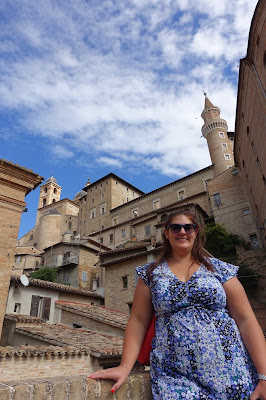So I've been struggling with blogging motivation for some time, as is probably evident from the lack of posts. One reason is I'm not sure what I do on my travels is really interesting any more. It's interesting to me, but now I'm not striking out on my own, staying in hostels, penny pinching etc. it just seems like one big comfortable bourgeois self-indulgence. However, if self-indulgence is the watchword, I do miss the idea of having my posts to look back on. I'm really conscious of how fast my memories fade, especially of those little quirky moments that do still sometimes happen when travelling. Even when I was blogging regularly, I could feel how they slipped away in the days or weeks before posting, so I know if I don't make an effort, I'll probably end up forgetting the mere fact that I even visited Dusseldorf or Delft (two quick trips from the last year or two that I don't think made it on to the blog).
Since the Italy honeymoon, I've been lucky enough to be in New Zealand and South Korea, as well as a few more weekends away - notably Lisbon and Manchester. So I'm going to try to forge ahead and at least wrap up the last two stops of the honeymoon.
So, last time out, I left you in
Urbino, eating delicious crescia. So let's pick things up there again. I think the two main things Urbino is known for is its lavish ducal court, particularly under Federico da Montefeltro, the duke from the famous P
iero della Francesca portrait, and as the birthplace of Raphael. We ticked both of these star attractions off the list in our visit.
The ducal palace is up on the hill, so you can get some pretty cool photos from vantage points around the city. Here we are walking a little on the city wall above the gate into the hill town (there is also a newer part down below, as we found in many of these hill towns, where we left the car - no thanks to driving on the steep, narrow, cobble-stoned streets of the city).
Much of the interior of the palace was a bit more sparse and forbidding than I had anticipated. I think this is quite a common thing with very old royal residences where the interior decoration of the time has not necessarily survived. Often they would travel together with their furniture between different residences, although I imagine that is a lot less likely in the case of the ruler of a city state. Most of the static decoration was on elaborately carved doors and decorated ceilings, but happily the palace is also home to the National Gallery of the Marche region, so there is still plenty to look at.
 |
| A fresco that is a (very) idealised portrait of the Duke and Duchess |
 |
| A more realistic image of the pair. The Duke lost an eye and the bridge of his nose in a jousting accident |
Although the famous Piero della Francesca portrait mentioned above is now in the Uffizi Gallery in Florence, the collection does include his Flagellation and Madonna of Senigallia.
 |
| Detail from the Flagellation |
 |
| It's really quite small |
 |
| Piero's Madonna |
 |
| La Muta, by Raphael |
By far my favourite bit of the palace was the Duke's
studiolo, a tiny room decorated with intarsia woodwork (similar to marquetry) and portraits of famous thinkers and writers. I'm not sure how well it comes across in photographs, but the detail and realism of the trompe l'oeil effects in the woodwork is stunning. I must have spent at least 20 minutes in this little 3.6 x 3.35 metre study, looking at every detail.
 |
| General view - note the fake open cupboard door on the lower left |
 |
| Trompe l'oeil shelves with musical instruments |
 |
| Squirrel friend |
 |
| More fake cupboards |
Last up, we visited the house where Raphael was born and grew up. Things I didn't know about Raphael: his father was himself a painter (court painter to the Duke in fact), and I believe his mother was from a noble family (this is what I remember from our visit, but all I can find on the internet is that she died when he was 8. This meant that his childhood home was a lot more substantial than one might imagine from the "starving artist" stereotype (see also Rubens' house, which I happened to visit this weekend - dude must have been loaded).
 |
| The Great Hall of Raphael's house |
 |
| A work by his father, Giovanni Santi |
 |
| Fresco in the room where Raphael was born. It is debated whether it is an early work by Raphael himself, or by his fathe |
 |
| This is here just because of the teeny tiny boar |
After Raphael's house, we had lunch at the Antica Osteria da la Stella, which has archival records of bills to such famous painters as Piero della Francesca, Ucello, and Raphael himself. Kind of a neat experience although I don't remember what the food was like. Good but not exceptional, I think.
In our "antique" hotel room and in the Ducal Palace, we had spotted these cool star-shaped lights which seemed to be characteristic of the region. We texted the landlady to ask where she got hers from, and she told us to go to this tiny workshop where an elderly lady makes them by hand. Pretty badass, as the kids say.
It survived the trip home as a unique souvenir of the honeymoon, although I wish we had thought to clean all the glass panels before hanging it up!





































































